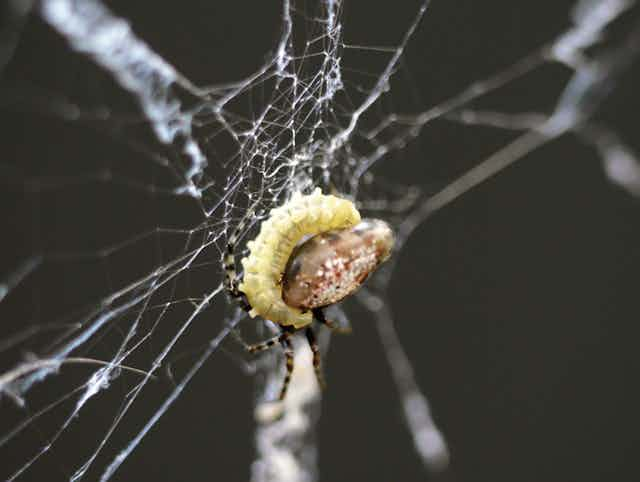Scientists in Japan have discovered a species of wasp that induces a zombie-like state in spiders in order to manipulate them into protecting the wasp’s own pupa.
The finding, published today in The Journal of Experimental Biology, is the latest example of biological control, whereby parasitic insects manipulate hosts for their own survival and reproduction.
The research team, led by Keizo Takasuka from the Graduate School of Agricultural Science at Kobe University in Japan, witnessed Reclinervellus nielseni wasps turn their host spiders, Cyclosa argenteoalba, into drugged slaves coerced into modifying web structures into cocoon webs to protect the wasp’s offspring, before the wasp’s pupa then kill the spiders.
Survival of the trickiest
Parasitic manipulation is a widespread phenomenon in the animal kingdom, but well documented cases are not common, so they are fascinating examples of evolutionary ecology, said David Yeates, Director of the Australian National Insect Collection at the CSIRO, who was not involved in the research.
Yeates also said the study gives insight into how parasites control their hosts to their own advantage.
“The changed behaviour always seems to reduce the chances of survival of the host, but increase the chances of the parasite surviving and reproducing effectively. So the parasite tricks the host into behaving against its own interests,” he said.
The researchers also found that the webs built by the manipulated spiders showed enhanced strength and other capacities that helped keep them intact. For example, they reflect UV light, which the researchers speculate might help ward off birds or large insects that could fly through and damage the web.
A sustainable solution for pest control?
According to Yeates, the hormone manipulation used by the wasps could have some practical applications for human challenges.
“Any parasite that can enhance its survival and reproduction by manipulating host behaviour is a compelling focus of attention when searching for effective biological control agents,” he said.
“Mechanisms that can manipulate, delay or disrupt moulting in pest insects are of interest for pest control. Such examples provide models for us to design control strategies around, in an emerging field called biomimicry.”

